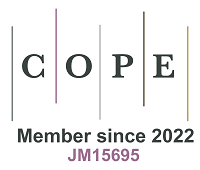REFERENCES
1. Bertram L, Tanzi RE. The genetic epidemiology of neurodegenerative disease. J Clin Invest 2005;115:1449-57.
3. Mirabelli P, Coppola L, Salvatore M. Cancer cell lines are useful model systems for medical research. Cancers (Basel) 2019;11:1098.
4. Heydari Z, Moeinvaziri F, Agarwal T, et al. Organoids: a novel modality in disease modeling. Biodes Manuf 2021;4:689-716.
5. Johan Arief MF, Choo BKM, Yap JL, Kumari Y, Shaikh MF. A systematic review on non-mammalian models in epilepsy research. Front Pharmacol 2018;9:655.
6. Götz J, Streffer JR, David D, et al. Transgenic animal models of Alzheimer’s disease and related disorders: histopathology, behavior and therapy. Mol Psychiatry 2004;9:664-83.
7. Murray SJ, Mitchell NL. The translational benefits of sheep as large animal models of human neurological disorders. Front Vet Sci 2022;9:831838.
8. Zhou X, Xin J, Fan N, et al. Generation of CRISPR/Cas9-mediated gene-targeted pigs via somatic cell nuclear transfer. Cell Mol Life Sci 2015;72:1175-84.
9. Fisher EMC, Bannerman DM. Mouse models of neurodegeneration: know your question, know your mouse. Sci Transl Med 2019;11:eaaq1818.
11. Eckhart L, Ballaun C, Hermann M, et al. Identification of novel mammalian caspases reveals an important role of gene loss in shaping the human caspase repertoire. Mol Biol Evol 2008;25:831-41.
12. Mapara M, Thomas BS, Bhat KM. Rabbit as an animal model for experimental research. Dent Res J (Isfahan) 2012;9:111-8.
13. Graur D, Duret L, Gouy M. Phylogenetic position of the order Lagomorpha (rabbits, hares and allies). Nature 1996;379:333-5.
14. de Almeida da Anunciação AR, Favaron PO, de Morais-Pinto L, et al. Central nervous system development in rabbits (Oryctolagus cuniculus L. 1758). Anat Rec (Hoboken) 2021;304:1313-28.
15. Tang D, Kang R, Berghe TV, Vandenabeele P, Kroemer G. The molecular machinery of regulated cell death. Cell Res 2019;29:347-64.
16. Selçuk ML, Tıpırdamaz S. A morphological and stereological study on brain, cerebral hemispheres and cerebellum of New Zealand rabbits. Anat Histol Embryol 2020;49:90-6.
17. Krafft PR, Bailey EL, Lekic T, et al. Etiology of stroke and choice of models. Int J Stroke 2012;7:398-406.
18. Butt M, Bolon B. Fundamental neuropathology for pathologists and toxicologists: principles and techniques. John Wiley & Sons; 2011. p. 551-4.
19. Harel S, Watanabe K, Linke I, Schain RJ. Growth and development of the rabbit brain. Biol Neonate 1972;21:381-99.
20. Yin P, Li S, Li XJ, Yang W. New pathogenic insights from large animal models of neurodegenerative diseases. Protein Cell 2022;13:707-20.
21. Bahney J, von Bartheld CS. The cellular composition and glia-neuron ratio in the spinal cord of a human and a nonhuman primate: comparison with other species and brain regions. Anat Rec (Hoboken) 2018;301:697-710.
22. Herculano-Houzel S. The remarkable, yet not extraordinary, human brain as a scaled-up primate brain and its associated cost. Proc Natl Acad Sci U S A 2012;109 Suppl 1:10661-8.
23. Herculano-Houzel S, Ribeiro P, Campos L, et al. Updated neuronal scaling rules for the brains of Glires (rodents/lagomorphs). Brain Behav Evol 2011;78:302-14.
24. Herculano-Houzel S, Mota B, Lent R. Cellular scaling rules for rodent brains. Proc Natl Acad Sci U S A 2006;103:12138-43.
25. Bradbury AG, Dickens GJ. Appropriate handling of pet rabbits: a literature review. J Small Anim Pract 2016;57:503-9.
26. Schreurs BG, Gusev PA, Tomsic D, Alkon DL, Shi T. Intracellular correlates of acquisition and long-term memory of classical conditioning in purkinje cell dendrites in slices of rabbit cerebellar lobule HVI. J Neurosci 1998;18:5498-507.
27. Schreurs BG. Cholesterol and copper affect learning and memory in the rabbit. Int J Alzheimers Dis 2013;2013:518780.
28. Weiss C, Bertolino N, Procissi D, et al. Diet-induced Alzheimer’s-like syndrome in the rabbit. Alzheimers Dement (N Y) 2022;8:e12241.
29. Woodruff-Pak DS, Agelan A, Del Valle L. A rabbit model of Alzheimer’s disease: valid at neuropathological, cognitive, and therapeutic levels. J Alzheimers Dis 2007;11:371-83.
30. Woodruff-Pak DS, Vogel RW 3rd, Wenk GL. Galantamine: effect on nicotinic receptor binding, acetylcholinesterase inhibition, and learning. Proc Natl Acad Sci U S A 2001;98:2089-94.
31. Kneynsberg A, Collier TJ, Manfredsson FP, Kanaan NM. Quantitative and semi-quantitative measurements of axonal degeneration in tissue and primary neuron cultures. J Neurosci Methods 2016;266:32-41.
32. Tudor EL, Galtrey CM, Perkinton MS, et al. Amyotrophic lateral sclerosis mutant vesicle-associated membrane protein-associated protein-B transgenic mice develop TAR-DNA-binding protein-43 pathology. Neuroscience 2010;167:774-85.
33. Devon RS, Orban PC, Gerrow K, et al. Als2-deficient mice exhibit disturbances in endosome trafficking associated with motor behavioral abnormalities. Proc Natl Acad Sci U S A 2006;103:9595-600.
34. Dutta S, Sengupta P. Rabbits and men: relating their ages. J Basic Clin Physiol Pharmacol 2018;29:427-35.
35. Blennow K, Zetterberg H. Biomarkers for Alzheimer’s disease: current status and prospects for the future. J Intern Med 2018;284:643-63.
36. Bridel C, van Wieringen WN, Zetterberg H, et al. the NFL Group. Diagnostic value of cerebrospinal fluid neurofilament light protein in neurology: a systematic review and meta-analysis. JAMA Neurol 2019;76:1035-48.
37. Heller C, Foiani MS, Moore K, et al. GENFI. Plasma glial fibrillary acidic protein is raised in progranulin-associated frontotemporal dementia. J Neurol Neurosurg Psychiatry 2020;91:263-70.
40. Mandino F, Cerri DH, Garin CM, et al. Animal functional magnetic resonance imaging: trends and path toward standardization. Front Neuroinform 2019;13:78.
41. Müllhaupt D, Augsburger H, Schwarz A, et al. Magnetic resonance imaging anatomy of the rabbit brain at 3 T. Acta Vet Scand 2015;57:47.
42. Coppedè F, Mancuso M, Siciliano G, Migliore L, Murri L. Genes and the environment in neurodegeneration. Biosci Rep 2006;26:341-67.
43. Chiò A, Logroscino G, Hardiman O, et al. Eurals Consortium. Prognostic factors in ALS: a critical review. Amyotroph Lateral Scler 2009;10:310-23.
44. Armstrong RA. Factors determining disease duration in Alzheimer’s disease: a postmortem study of 103 cases using the Kaplan-Meier estimator and Cox regression. Biomed Res Int 2014;2014:623487.
45. Pagano G, Ferrara N, Brooks DJ, Pavese N. Age at onset and Parkinson disease phenotype. Neurology 2016;86:1400-7.
46. Nair RR, Corrochano S, Gasco S, et al. Uses for humanised mouse models in precision medicine for neurodegenerative disease. Mamm Genome 2019;30:173-91.
47. Bové J, Prou D, Perier C, Przedborski S. Toxin-induced models of Parkinson’s disease. NeuroRx 2005;2:484-94.
48. Flisikowska T, Thorey IS, Offner S, et al. Efficient immunoglobulin gene disruption and targeted replacement in rabbit using zinc finger nucleases. PLoS One 2011;6:e21045.
49. Yang D, Zhang J, Xu J, et al. Production of apolipoprotein C-III knockout rabbits using zinc finger nucleases. J Vis Exp 2013:e50957.
50. Ji D, Zhao G, Songstad A, Cui X, Weinstein EJ. Efficient creation of an APOE knockout rabbit. Transgenic Res 2015;24:227-35.
51. Zhang J, Niimi M, Yang D, et al. Deficiency of cholesteryl ester transfer protein protects against atherosclerosis in rabbits. Arterioscler Thromb Vasc Biol 2017;37:1068-75.
52. Song J, Zhong J, Guo X, et al. Generation of RAG 1- and 2-deficient rabbits by embryo microinjection of TALENs. Cell Res 2013;23:1059-62.
53. Song Y, Liu T, Wang Y, et al. Mutation of the Sp1 binding site in the 5’ flanking region of SRY causes sex reversal in rabbits. Oncotarget 2017;8:38176-83.
54. Song Y, Xu Y, Liang M, et al. CRISPR/Cas9-mediated mosaic mutation of SRY gene induces hermaphroditism in rabbits. Biosci Rep 2018;38:BSR20171490.
55. Sui T, Lau YS, Liu D, et al. A novel rabbit model of Duchenne muscular dystrophy generated by CRISPR/Cas9. Dis Model Mech 2018;11:dmm032201.
56. Sui T, Xu L, Lau YS, et al. Development of muscular dystrophy in a CRISPR-engineered mutant rabbit model with frame-disrupting ANO5 mutations. Cell Death Dis 2018;9:609.
57. Yuan L, Yao H, Xu Y, et al. CRISPR/Cas9-mediated mutation of αA-crystallin gene induces congenital cataracts in rabbits. Invest Ophthalmol Vis Sci 2017;58:BIO34-41.
58. Yuan L, Sui T, Chen M, et al. CRISPR/Cas9-mediated GJA8 knockout in rabbits recapitulates human congenital cataracts. Sci Rep 2016;6:22024.
59. Lu R, Yuan T, Wang Y, et al. Spontaneous severe hypercholesterolemia and atherosclerosis lesions in rabbits with deficiency of low-density lipoprotein receptor (LDLR) on exon 7. EBioMedicine 2018;36:29-38.
60. Guo R, Wan Y, Xu D, et al. Generation and evaluation of Myostatin knock-out rabbits and goats using CRISPR/Cas9 system. Sci Rep 2016;6:29855.
61. Lv Q, Yuan L, Deng J, et al. Efficient generation of myostatin gene mutated rabbit by CRISPR/Cas9. Sci Rep 2016;6:25029.
62. Sui T, Yuan L, Liu H, et al. CRISPR/Cas9-mediated mutation of PHEX in rabbit recapitulates human X-linked hypophosphatemia (XLH). Hum Mol Genet 2016;25:2661-71.
63. Sui T, Liu D, Liu T, et al. LMNA-mutated rabbits: a model of premature aging syndrome with muscular dystrophy and dilated cardiomyopathy. Aging Dis 2019;10:102-15.
64. Wu H, Liu Q, Shi H, et al. Engineering CRISPR/Cpf1 with tRNA promotes genome editing capability in mammalian systems. Cell Mol Life Sci 2018;75:3593-607.
65. Honda A, Hirose M, Sankai T, et al. Single-step generation of rabbits carrying a targeted allele of the tyrosinase gene using CRISPR/Cas9. Exp Anim 2015;64:31-7.
66. Song Y, Xu Y, Deng J, et al. CRISPR/Cas9-mediated mutation of tyrosinase (Tyr) 3’ UTR induce graying in rabbit. Sci Rep 2017;7:1569.
67. Liu T, Wang J, Xie X, et al. DMP1 Ablation in the rabbit results in mineralization defects and abnormalities in haversian canal/osteon microarchitecture. J Bone Miner Res 2019;34:1115-28.
68. Lu Y, Liang M, Zhang Q, et al. Mutations of GADD45G in rabbits cause cleft lip by the disorder of proliferation, apoptosis and epithelial-mesenchymal transition (EMT). Biochim Biophys Acta Mol Basis Dis 2019;1865:2356-67.
69. Wan Y, Guo R, Deng M, et al. Efficient generation of CLPG1-edited rabbits using the CRISPR/Cas9 system. Reprod Domest Anim 2019;54:538-44.
70. Song Y, Sui T, Zhang Y, et al. Genetic deletion of a short fragment of glucokinase in rabbit by CRISPR/Cas9 leading to hyperglycemia and other typical features seen in MODY-2. Cell Mol Life Sci 2020;77:3265-77.
71. Yang Y, Kang X, Hu S, et al. CRISPR/Cas9-mediated β-globin gene knockout in rabbits recapitulates human β-thalassemia. J Biol Chem 2021;296:100464.
72. Zhou J, Yan Q, Tang C, et al. Development of a rabbit model of Wiskott-Aldrich syndrome. FASEB J 2021;35:e21226.
73. Yao B, Liang M, Liu H, et al. The minimal promoter (P1) of Xist is non-essential for X chromosome inactivation. RNA Biol 2020;17:623-9.
74. Zhang T, Lu Y, Song S, et al. “Double-muscling” and pelvic tilt phenomena in rabbits with the cystine-knot motif deficiency of myostatin on exon 3. Biosci Rep 2019;39:BSR20190207.
75. Yan K, Zhang T, Zha Y, Liang J, Cheng Y. Construction of point mutation rabbits using CRISPR/Cas9. Zhejiang Da Xue Xue Bao Yi Xue Ban 2021;50:229-38.
76. Xu J, Livraghi-Butrico A, Hou X, et al. Phenotypes of CF rabbits generated by CRISPR/Cas9-mediated disruption of the CFTR gene. JCI Insight 2021;6:139813.
78. Xu Y, Liu H, Pan H, et al. CRISPR/Cas9-mediated disruption of fibroblast growth factor 5 in rabbits results in a systemic long hair phenotype by prolonging anagen. Genes (Basel) 2020;11:297.
79. Hashikawa Y, Hayashi R, Tajima M, et al. Generation of knockout rabbits with X-linked severe combined immunodeficiency (X-SCID) using CRISPR/Cas9. Sci Rep 2020;10:9957.
80. Xiao N, Li H, Shafique L, et al. A novel pale-yellow coat color of rabbits generated via MC1R mutation with CRISPR/Cas9 system. Front Genet 2019;10:875.
81. Jiang W, Liu L, Chang Q, et al. Production of Wilson disease model rabbits with homology-directed precision point mutations in the ATP7B gene using the CRISPR/Cas9 system. Sci Rep 2018;8:1332.
82. Song Y, Zhang Y, Chen M, et al. Functional validation of the albinism-associated tyrosinase T373K SNP by CRISPR/Cas9-mediated homology-directed repair (HDR) in rabbits. EBioMedicine 2018;36:517-25.
83. Song Y, Yuan L, Wang Y, et al. Efficient dual sgRNA-directed large gene deletion in rabbit with CRISPR/Cas9 system. Cell Mol Life Sci 2016;73:2959-68.
84. Song J, Wang G, Hoenerhoff MJ, et al. Bacterial and pneumocystis infections in the lungs of gene-knockout rabbits with severe combined immunodeficiency. Front Immunol 2018;9:429.
85. Song J, Yang D, Ruan J, Zhang J, Chen YE, Xu J. Production of immunodeficient rabbits by multiplex embryo transfer and multiplex gene targeting. Sci Rep 2017;7:12202.
86. Yan Q, Zhang Q, Yang H, et al. Generation of multi-gene knockout rabbits using the Cas9/gRNA system. Cell Regen 2014;3:12.
87. Liu H, Sui T, Liu D, et al. Multiple homologous genes knockout (KO) by CRISPR/Cas9 system in rabbit. Gene 2018;647:261-7.
88. Yang D, Song J, Zhang J, et al. Identification and characterization of rabbit ROSA26 for gene knock-in and stable reporter gene expression. Sci Rep 2016;6:25161.
89. Song J, Yang D, Xu J, Zhu T, Chen YE, Zhang J. RS-1 enhances CRISPR/Cas9- and TALEN-mediated knock-in efficiency. Nat Commun 2016;7:10548.
90. Liu Z, Chen M, Chen S, et al. Highly efficient RNA-guided base editing in rabbit. Nat Commun 2018;9:2717.
91. Liu Z, Shan H, Chen S, et al. Improved base editor for efficient editing in GC contexts in rabbits with an optimized AID-Cas9 fusion. FASEB J 2019;33:9210-9.
92. Liu Z, Chen S, Shan H, et al. Efficient base editing with high precision in rabbits using YFE-BE4max. Cell Death Dis 2020;11:36.
93. Liu Z, Chen S, Jia Y, et al. Efficient and high-fidelity base editor with expanded PAM compatibility for cytidine dinucleotide. Sci China Life Sci 2021;64:1355-67.
94. Liu Z, Chen S, Shan H, et al. Precise base editing with CC context-specificity using engineered human APOBEC3G-nCas9 fusions. BMC Biol 2020;18:111.
95. Liu Z, Shan H, Chen S, et al. Highly efficient base editing with expanded targeting scope using SpCas9-NG in rabbits. FASEB J 2020;34:588-96.
96. Chen S, Xie W, Liu Z, et al. CRISPR start-loss: a novel and practical alternative for gene silencing through base-editing-induced start codon mutations. Mol Ther Nucleic Acids 2020;21:1062-73.
97. Zhao D, Qian Y, Li J, Li Z, Lai L. Highly efficient A-to-G base editing by ABE8.17 in rabbits. Mol Ther Nucleic Acids 2022;27:1156-63.
98. Qian Y, Zhao D, Sui T, et al. Efficient and precise generation of Tay-Sachs disease model in rabbit by prime editing system. Cell Discov 2021;7:50.
99. Cong L, Ran FA, Cox D, et al. Multiplex genome engineering using CRISPR/Cas systems. Science 2013;339:819-23.
100. Mali P, Yang L, Esvelt KM, et al. RNA-guided human genome engineering via Cas9. Science 2013;339:823-6.
101. Yang D, Xu J, Zhu T, et al. Effective gene targeting in rabbits using RNA-guided Cas9 nucleases. J Mol Cell Biol 2014;6:97-9.
102. Kang Y, Chu C, Wang F, Niu Y. CRISPR/Cas9-mediated genome editing in nonhuman primates. Dis Model Mech 2019;12:dmm039982.
103. Tu Z, Yang W, Yan S, Guo X, Li XJ. CRISPR/Cas9: a powerful genetic engineering tool for establishing large animal models of neurodegenerative diseases. Mol Neurodegener 2015;10:35.
104. Gaudelli NM, Komor AC, Rees HA, et al. Publisher correction: programmable base editing of A•T to G•C in genomic DNA without DNA cleavage. Nature 2018;559:E8.
105. Liu Z, Shan H, Chen S, et al. Efficient base editing with expanded targeting scope using an engineered Spy-mac Cas9 variant. Cell Discov 2019;5:58.







